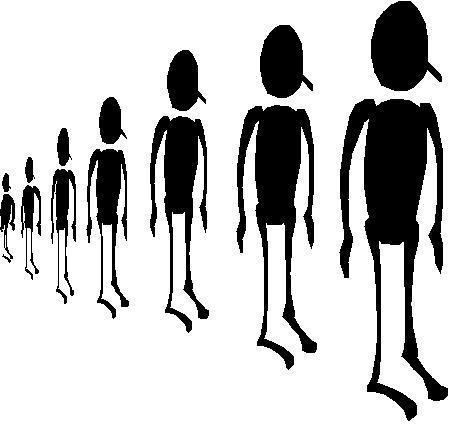Pat Bertram's Blog, page 229
July 7, 2013
Reality vs. Delusion
“It is far better to grasp the Universe as it really is than to persist in delusion, however satisfying and reassuring.” — Carl Sagan
Is Carl Sagan right? When it comes to the cosmic universe, perhaps. When it comes to our personal universe, is it better to persist in delusion? Isn’t that what a dream is, a delusion? The dream might be attainable with luck and hard work, in which case it’s not a delusion. If it is not attainable, is it better to hold on to the dream or is it better to persist in delusion?
I used to think reality was important — I spent my life trying to get down to the rock bottom of ”that which is” (as opposed to what we think is). I studied particle physics and quantum mechanics (for fun, can you imagine that?) and discovered that every  particle can be divided into smaller particles and those particles can be divided, until what you end up is nothing. Or a wave. Or a thought. Or something that changes every time you look at it.
particle can be divided into smaller particles and those particles can be divided, until what you end up is nothing. Or a wave. Or a thought. Or something that changes every time you look at it.
I no longer know if reality is all it’s cracked up to be. If our perceptions can change ”that which is” at the quantum level, perhaps it can change life at the macro level where we live. If so, it might be better to persist in delusion.
I explore this theme of delusion (or illusion, which perhaps comes down to the same thing) in all of my books: What is truth? What is reality? Who are we, really – are we our memories, our experiences, our dreams? I also often explore similar themes in this blog. And I still don’t have an answer.
Reality feels real, while fantasy feels nebulous and silly, but what is fiction writing if not fantasy? We create worlds that never were with our words, and those worlds come alive in reader’s minds, so real, that readers discuss fictional characters as if they were real, and in a certain context, they are real. If the universe is thought, then perhaps they are even as real as we are. Thoughts might have created us in the same way we create characters.
Writing is a powerful tool for living. As we visual other facets of this world, we become better prepared for the vicissitudes of the “real” world. Writers often write for others, needing to connect with readers, which is important. But even more important is writing for ourselves, creating worlds where our worst fears our vanquished and our dearest dreams are realized.
Can writing actually help us create our future? Some people believe that the more concrete one’s visualization, the greater the chance the vision has of becoming real. Symbols also have their place, perhaps reaching even deeper into our psyches than visualization does, and symbols are generally not reality but only representations of reality. In the same symbolical way our nightly dreaming sometimes connects us to things not of this world, perhaps fiction too can connect us to things not of this world.
Like Sagan, I’ve always believed it better to grasp the universe as it is than to persist in delusion, but perhaps it’s time to change my thinking.
***
Pat Bertram is the author of the suspense novels Light Bringer, More Deaths Than One, A Spark of Heavenly Fire, and Daughter Am I. Bertram is also the author of Grief: The Great Yearning, “an exquisite book, wrenching to read, and at the same time full of profound truths.” Follow Pat on Google+. Like Pat on Facebook.
Tagged: Carl Sagan, creating our future, delusion, delusion vs reality, reality


July 6, 2013
Figuring Things Out
For the past two months, I’ve been dealing with a situation I can’t write about. It’s outside the scope of this blog, and the people involved would be terrible hurt if I were to make the drama public. It’s a sadly inevitable predicament, with roots dating back to my childhood, and without being able to write about it, I haven’t had any way to deal with my grief over the situation except walking. And tears.
I’ve found myself crying at odd moments, and it’s been comforting, being in the embrace of this old friend. Like most people, I used to think tears were a sign of weakness, but now I know they are a way of getting rid of the hormones that build up with stress. They are also a way of connecting to one’s inner self, as if that self is saying, “There, there. Everything is going to be okay.”
myself crying at odd moments, and it’s been comforting, being in the embrace of this old friend. Like most people, I used to think tears were a sign of weakness, but now I know they are a way of getting rid of the hormones that build up with stress. They are also a way of connecting to one’s inner self, as if that self is saying, “There, there. Everything is going to be okay.”
And maybe things will be okay. Eventually. I’ll figure out my dilemma, if only how to deal with the fallout of the situation.
Today I went out walking earlier than normal to try to beat the heat, and apparently that’s what many others did because I saw a lot of people out and about. I don’t like meeting other people when I walk. Walking is my private time, a means of getting in touch with myself and my surroundings, a place to open myself to inspiration and mystical thoughts, a way to deal with my problems, and people disrupt all that. Since the foot traffic kept me away from my usual route to the desert, I took a different direction to get to the back trail I prefer — the trail is a demanding walk with lots of ups and downs and in certain areas a cool wind comes drifting down the hills. Also, for some reason, it’s where I talk to my deceased life mate/soul mate. (I’ve never been able to figure out why I associate him with that particular area. He never liked the desert, he hated the heat, and he’d never been within a thousand miles of the place.)
When I found my way to that back trail, I said aloud to him, “See? I figured it out.” And then I realized how true the words were. During all these years of dealing with the dying of my life mate/soul mate and my ensuing grief, I’ve had a lot of trauma thrown at me, but I figured out each step. I had to deal with funeral services people, get rid of his things, clear out the twenty-year accumulation in our home, store what I wanted to keep, get myself to my father’s house so I could look after him, learn to live with grief and all its torments, deal with the challenges of the book world and of the world in general.
Although I worry too much (I call it weighing my options), and don’t always know where I am headed, when it comes time to take action, I do manage to figure things out. And I have no doubt I’ll continue doing so, which is a good thing. Life isn’t finished throwing challenges at me — besides my current dilemma, there’s still my father’s decline, my need to restart my life when he’s gone, the vicissitudes of aging to deal with alone, and a host of other difficulties that will be sure to taunt me — but I will figure things out when I get there.
***
Pat Bertram is the author of the suspense novels Light Bringer, More Deaths Than One, A Spark of Heavenly Fire, and Daughter Am I. Bertram is also the author of Grief: The Great Yearning, “an exquisite book, wrenching to read, and at the same time full of profound truths.” Follow Pat on Google+. Like Pat on Facebook.
Tagged: figuring things out, grief, grief and tears, stress, tears, walking


July 5, 2013
The Most Dastardly Villain of All
Sometimes it seems as if most books and movies today are glorified comic books, epic battles between the good and the impossibly evil. Conflicts in which there are no shades of gray must be satisfying for many people, since such books sell by the millions, but I like a little more subtlety in my conflicts, a little more reality.
In a world that seems to be run by the major corporations, the stories where a lone hero takes on a megalithic corporation, brings down the owner of the company, and saves the world just are not plausible. Though I’m sure the presidents of the major corporations think they are indispensable, they are not. If they are eliminated, there will always be others to take their place,  and the corporations will go on doing whatever it is that they do.
and the corporations will go on doing whatever it is that they do.
Because I know this and cannot escape it even in a world of my own creation, the conflicts in my books tend to be less clearly defined than good versus evil. Of course I have heroes and villains, but the villains are not always dastardly ones, though my other characters may perceive them as such. The villains are the heroes of their own story, and though a corporation is often the villains’ vehicle, my heroes don’t bring it down.
I like my heroes to find a romantic partner, but I prefer that partner to be a co-protagonist. It seems to dissipate the energy of the story if the male and female leads are always in conflict. I find it more satisfying when they bond together in their struggle against fate (or against another character as the personification of fate). To me, the biggest villain around is fate. What is more unfair, more murderous, more disastrous, more villainous than fate?
Because of fate, people get sick, die, have accidents, lose the one they love, lose their homes, freeze in winter, swelter in summer, get slammed by hurricanes or tornadoes, get washed away in tsunamis. No human villain can compete with such destruction.
My heroes never bring on their fate for the simple reason that I cannot sympathize with characters who are the cause of their own problems, and why would characters ever have to cause problems for themselves when life itself is always ready to cause problems for them? This is especially true in my poor stalled work in progress. Everywhere my hero turns, fate throws another fit and leaves him to deal with the mess. Sounds like real life, doesn’t it? We make plans, but life doesn’t consider our plans before deciding our fate.
My heroes are always slow to meet their fate. To begin with, they are usually laid back types, but during the course of the book, they are forced into action and then become dedicated to their mission.
Fate, of course, has other plans, and so conflicts escalate throughout my books, just as they do in life. When fate comes knocking on the door, everything changes. And that’s when a real story, not a comic book, begins.
***
Pat Bertram is the author of the suspense novels Light Bringer, More Deaths Than One, A Spark of Heavenly Fire, and Daughter Am I. Bertram is also the author of Grief: The Great Yearning, “an exquisite book, wrenching to read, and at the same time full of profound truths.” Follow Pat on Google+. Like Pat on Facebook.
Tagged: conflict, creating characters, fate as villain, heroes, life as villain, Lone Hero


July 4, 2013
Facets of Freedom
It seem fitting that I’ve begun working on my poor stalled novel at a time when we are celebrating freedom. This book was supposed to be my declaration of independence from the dictates of the publishing industry, a story so silly it had no chance of ever being published. Oddly, somewhere along the way, the book metamorphosed from a whimsical story into something deeply metaphysical with a heavy theme: freedom vs. safety. More specifically, the book explores how much freedom we are willing to give up for safety and how much safety we are willing to give up for freedom.
Robert Mc Kee, author of Story, wrote: “The revelation of true character in contradiction to characterization (the sum of all observable qualities) is fundamental to all fine storytelling. What seems is not what is. People are not what they appear to be. A hidden nature waits concealed behind the facade of traits.”
Kee, author of Story, wrote: “The revelation of true character in contradiction to characterization (the sum of all observable qualities) is fundamental to all fine storytelling. What seems is not what is. People are not what they appear to be. A hidden nature waits concealed behind the facade of traits.”
If my hero doesn’t know what he truly wants until he gets it, it will add another dimension to this theme. He first chooses freedom because he believes he wants freedom more than anything. Next he chooses incarceration and safety because survival becomes the most important thing to him. Then he chooses the excitement and danger of freedom over the boredom of safety because he wants to feel alive, to participate in creation, if only to create himself. Finally he accepts responsibility, which is a different facet of freedom (without responsibility, freedom is merely self-indulgence), and it turns out this is what he wanted all along.
By giving Chip an inner character in contradiction to his outer one, he should become a richer character, which in turn will allow the story to explore all the facets of the theme rather than the simple one of freedom vs. safety.
At least that’s the plan.
***
Pat Bertram is the author of the suspense novels Light Bringer, More Deaths Than One, A Spark of Heavenly Fire, and Daughter Am I. Bertram is also the author of Grief: The Great Yearning, “an exquisite book, wrenching to read, and at the same time full of profound truths.” Follow Pat on Google+. Like Pat on Facebook.
Tagged: freedom, freedom vs self-indulgence, freedom vs. safety, Robert McKee, story, story themes


July 3, 2013
Dealing with Myriad Characters
It’s amazing how much I have forgotten about my work in progress, the one that’s been paused for the better part of three years. (I’ve been writing it on again and off again for six years, actually. Life and death have so often broken me away from the work, that it’s progressing on an average of 8,000 words a year. At this rate, it will be finished in three more years.)
During the first third of the book, my poor hero was mostly alone as he dealt with the affects of a world gone berserk, which created many writing challenges. It’s much easier to write with two characters so they can play off each other, butt heads, have dialogues, or whatever is necessary for the story.
The second part of the book presented an entirely different challenge — too many characters. I’m typing up a stray chapter, one I wrote three years ago, and it astonished me to count fifteen characters: my hero, his nemesis, three starfish-like aliens, plus ten supporting characters. Ouch.
Luckily, I’d done research on group dynamics shortly after I started writing this book, and so I was able to give each human an identifiable role in the group. As I found out, at times groups act like a single entity, so that also helps in dealing with myriad characters. As I wrote in On Writing: Characters and Group Mentality:
 There are five stages of group development:
There are five stages of group development:
1. Coming together and finding roles
2. Defining the task
3. Disenchantment with the leader, each other
4. Cohesion, feeling like a team
5. Interdependence, acting like a team, becoming more than the sum of the parts.
Most groups unconsciously assign roles to the members, and once these roles have been assigned, tacit agreement maintains them. The most common group roles are: leader, seducer (wants to bewitch others), silent member, taskmaster, clown, victim, oppressor, conciliator, combatant, nurse, young Turk (wants to take over the leadership), the naïf, and the scapegoat.
Groups tend to isolate one person as the source of any conflict, whether warranted or not, and they deposit their negative feelings on that person. Because my hero keeps to himself, and because the others think he’s “teacher’s pet,” he becomes the scapegoat. I don’t think he cares, though, so if you don’t care, are you still the scapegoat? Either way, that’s the role the group has assigned him.
Well, the group didn’t assign him that role; apparently I did once upon a time. It should be interesting to see what other treasures I find as I rediscover this story.
***
Pat Bertram is the author of the suspense novels Light Bringer, More Deaths Than One, A Spark of Heavenly Fire, and Daughter Am I. Bertram is also the author of Grief: The Great Yearning, “an exquisite book, wrenching to read, and at the same time full of profound truths.” Follow Pat on Google+. Like Pat on Facebook.
Tagged: character development, characters, group mentality, group roles, hero, scapegoat, stages of group development


July 2, 2013
A Book that Begs to be Finished
I printed out my work in pause (not quite a work in progress yet, but I’m getting there). It’s been so long since I’ve worked on it, I don’t remember all the specifics of what I wrote and I need to know what I have and where I need to go from here.
It’s a book worth finishing, if only to see what I end up doing with it. Here is where I left the book more than four years ago:
A shriek like that of a jungle beast in pain woke Chip. He rolled over onto his back, too tired to wonder who or what could be making such a racket. Dry leaves scratched his bare skin. What happened to his shirt? He patted the ground beside him thinking that perhaps the buttons had somehow come undone during the night, but he didn’t feel any fabric.
Mo re shrieks and shouts. This time the screeches sounded decidedly human.
re shrieks and shouts. This time the screeches sounded decidedly human.
He squinted at the sun. It seemed to be lower on the eastern horizon than when he lay down for a nap after his breakfast. Could the sun be moving backward? He closed his eyes. More probably, he’d slept round the clock. But clocks didn’t exist any more. Letting out a soft groan, he wondered how long such outdated expressions would linger.
A breeze ruffled the hair on his thighs. He raised his head and stared at his legs. When he fell asleep yesterday—was it yesterday? It could just as easily have been a week ago—he’d been fully dressed.
He caught a glimpse of hot pink and lime green between his thighs. He jerked upright.
Poor Chip, having to spend four years in such a state. It’s time I moved him beyond this horror and into even more horror. Or humor.
***
Pat Bertram is the author of the suspense novels Light Bringer, More Deaths Than One, A Spark of Heavenly Fire, and Daughter Am I. Bertram is also the author of Grief: The Great Yearning, “an exquisite book, wrenching to read, and at the same time full of profound truths.” Follow Pat on Google+. Like Pat on Facebook.
Tagged: book worth finishing, WIP, work in pause, work in progress


July 1, 2013
Rebelling Against Life
Early in the twenty-first century, I set out to fulfill a lifelong dream to be a writer. I wrote a book that was so terrible, I packed it away and never looked at it again. I kept writing, though, and I studied the craft of writing along with the art of getting published. I wrote a book I was proud of, and set out to find a publisher. When I racked up too many rejections, I took a break and went back to writing. Wrote an even better novel, and when it was finished, I sent out query letters and proposals to agents and publishers. Still no takers. So I wrote another novel and then another.
By the end of six years, I had four solid novels (including my magnum opus) and more than 200 rejections. So I went back to writing. But this time I decided to forget trying to write something readers would want to read, agents would want to agent, or publishers would want to publish. I decided to write something silly and unpublishable as a rebellion against the system.
I w rote half of this new novel, and then things changed. My mother became ill and died. My life mate/soul mate kept getting weaker and weaker. I got a computer and the internet, and learned blogging and emailing and various new ways of querying agents and publishers, racking up even more rejections.
rote half of this new novel, and then things changed. My mother became ill and died. My life mate/soul mate kept getting weaker and weaker. I got a computer and the internet, and learned blogging and emailing and various new ways of querying agents and publishers, racking up even more rejections.
During all this time, my silly story just languished. There was too much real life going on (if either death or the internet can be called real life), and I had no time for foolishness. I finally found a publisher who loved my books, which started a completely new focus for me — editing, promotion, Facebook, networking. And then my life mate/soul mate was diagnosed with inoperable kidney cancer, and “real life” took on a whole other meaning.
My silly story continued to languish. What use is whimsy when my world had collapsed? Why rebel against the system when life itself seemed to be rebelling against me? I could barely smile for more than four years during his illness, his death, and my grief let alone be able to see the humor in the world coming to a fictitious end.
I still don’t see the humor in life, but I am beginning to sense the stirrings of rebellion. I don’t much like this brave new world of publishing where anyone who strings a few unedited words together can publish their scribblings and call him or herself an author. I don’t like spending so much time on the internet hoping to attract readers (though I do like getting to know people). I don’t much like the real world, either. I don’t like sickness and death. I don’t like loneliness and heartache. I don’t like . . . well, there’s no need to make a list of the things I don’t like. The point is, I am feeling that same rebellion I felt when I started writing my silly story.
Oddly, until this very moment, I thought the emotion driving the story was whimsy, when in fact it was rebellion. I’m not in the mood for humor or wit or looking at the absurdities of life because the realities are still too strong. But I can do rebellion.
And I will.
***
Pat Bertram is the author of the suspense novels Light Bringer, More Deaths Than One, A Spark of Heavenly Fire, and Daughter Am I. Bertram is also the author of Grief: The Great Yearning, “an exquisite book, wrenching to read, and at the same time full of profound truths.” Follow Pat on Google+. Like Pat on Facebook.
Tagged: death and dying, life changes., real life vs. fiction, rebelling, rebellious attitude, rejections, writing


June 30, 2013
Authors Connecting With Readers
I read an article the other day telling writers they should be connecting with readers online instead of other writers. He gave a few suggestions like going on Goodreads, following people who read the same sort of book you wrote, leaving comments on their reviews or joining the same groups and responding to the same discussions they do.
Is this what online promotion has come to? Authors stalking readers like prey? Many readers do like to interact with authors, and perhaps they would be flattered if it were an author they knew, but an unknown author trying to connect with an unknown  reader seems tacky at best. I know I would hate it if I found myself in some author’s sights, and I can’t imagine I’m the only one who would.
reader seems tacky at best. I know I would hate it if I found myself in some author’s sights, and I can’t imagine I’m the only one who would.
I am not a reader who likes to connect with authors. (Though I love when readers connect with me!) To me, a book exists separate from its creator, a thing in and of itself. In fact, once I started coming in contact with writers, especially writers whose book I have read, I lost all interest in reading. It made me more cognizant of the person behind the story, and made the book much less personal.
I do have a group for connecting with readers on Facebook, the Genre Book Club, but most of the people who participate are authors in search of readers. The main problem is that I don’t seem to be able to get people to discuss the books they read. Everyone has different tastes, and few of the participants read the same books.
It is a conundrum, this online promotion. I do realize that connecting with other writers is not the way to sell a ton of books, but writers send me a lot more invitations to connect than readers do, and after all, many of us writers started out as readers.
The article also suggested attracting readers by blogging about the subject matter of your books. I do this, of course, when it comes to grief, but I said all I want to say about conspiracy theories, government intervention in our lives, and the scary possibility of an unstoppable epidemic in my novels. I don’t want to spend the rest of my life talking about such matters. The books were a way of my putting an end to those topics of research, and to keep them in the forefront of my mind and this blog would be appallingly boring. (For me, anyway.)
Still, this blog is a way of connecting with people, not as stalker and prey, but simply as two individuals who happen to be in the same place at the same time and like what each other has to say. And that’s more important than running after readers in the hopes they will buy my books.
***
Pat Bertram is the author of the suspense novels Light Bringer, More Deaths Than One, A Spark of Heavenly Fire, and Daughter Am I. Bertram is also the author of Grief: The Great Yearning, “an exquisite book, wrenching to read, and at the same time full of profound truths.” Follow Pat on Google+. Like Pat on Facebook.
Tagged: authors connecting with readers, book promotion, finding readers, Goodreads, readers connecting with authors


June 29, 2013
Keeping Track of Characters
 I don’t often do character profiles before writing a novel except to decide on basic information — gender, a couple of physical traits and maybe general idea of personality type. I prefer to let the needs of the story dictate who the character is. I mean, if I have created a caring, nurturing character, and the story demands a wisecracking sharpshooter, then the story starts out with problems from the beginning. (Unless, of course, the wisecracking hides a caring, nurturing side of the character, which could make for an interesting character, though I’m sure it’s been done thousands of times before.)
I don’t often do character profiles before writing a novel except to decide on basic information — gender, a couple of physical traits and maybe general idea of personality type. I prefer to let the needs of the story dictate who the character is. I mean, if I have created a caring, nurturing character, and the story demands a wisecracking sharpshooter, then the story starts out with problems from the beginning. (Unless, of course, the wisecracking hides a caring, nurturing side of the character, which could make for an interesting character, though I’m sure it’s been done thousands of times before.)
Each book, of course, has its own demands, and Light Bringer had more demands than most. It was the only book I did a storyboard for. Halfway through, I got lost in all the points of view, the various stories that needed to be intertwined, the special needs of the novel, so I wrote a brief description of each scene on a card and played with them, dealing them out in various arrangements until I found the best way to fit all the pieces together.
Light Bringer was also the only book I did a character chart for. The story was based on both modern and ancient conspiracy theories (though ancient conspiracy theories fall under the category of “myth”). Instead of having one erudite character lecture a clueless character on the theories, I created a discussion group where each character believed and vociferously defended his or her pet theory. One unexpected benefit of the group was that I had ready-made pool of characters to draw from for bit parts.
Group dialogue causes problems for readers in that it’s hard sometimes to keep track of who is talking and what their purpose is in the story. It’s also hard for writers to keep track, so I made a chart of all the characters, their beliefs, style, food needs, and various other aspects to make sure that each was different.
For example, Scott Newman, a retired banker, believed that the international bankers were controlling the world to gain total wealth and power. He was lean, sharp-featured, contemptuous, didn’t eat “corporate foods” (things like chips and frozen dinners that were created by corporations) because as a loan officer, he’d already done enough to further the aims of the international bankers.
Faye Pozinski was almost his direct opposite. She believed that the British oligarchy (London bankers, the London School of Economics, the Fabian Society, the Rhodes Round Table) were controlling the world to create a neoBritish empire ruled by a theocratic world king. An ample woman in her fifties still working as a grocery clerk, Faye was hearty with a braying voice, a vegetarian, and delighted in wearing wildly colored clothes.
And then there was Chester, a wizened, jeans-wearing diabetic fruit grower who overdramatized everything. He’d once seen a UFO over his orchard, and he believes we are ripe for an alien takeover because he’s convinced these otherworldly creatures want to keep us from blowing up the earth.
These are only three of my discussion group characters but you can see why I needed a chart. So much to keep track of!
***
Pat Bertram is the author of the suspense novels Light Bringer, More Deaths Than One, A Spark of Heavenly Fire, and Daughter Am I. Bertram is also the author of Grief: The Great Yearning, “an exquisite book, wrenching to read, and at the same time full of profound truths.” Follow Pat on Google+. Like Pat on Facebook.
Tagged: alien takeover, character chart, international bankers, Light Bringer, neoBritish empire, storyboard


June 28, 2013
Grieving For Grief
A woman who lost her life mate/soul mate around the same time as I lost mine told me about an insignificant event that briefly stirred up her low-lying grief, and then she said, “I wonder if I were grieving for grief.”
It sounds strange, but the truth is, we do grieve for grief. Grief for a spouse or a soul mate is so all-consuming, that it fills, in a strange sort of way, the hole they left in our life. Grief, as hard as it is, makes us feel, which makes us feel alive. Grief keeps us connected, if only by pain, to our mates. Grief reminds us that we once loved, and perhaps were loved in return. Grief gives us a glimpse of the vastness of life and the void of death and makes our existence feel important, makes us feel important. When grief passes, we have none of those things, just an emotional and spiritual emptiness. And so we grieve for the loss of our grief. Eventually, I hope, we will find something to replace grief, as grief replaced our love, but who knows what that will be and when or if it will come.
One of the tasks of grief is to help disconnect us from the past so that we can embrace the future while living as fully in the present as possible without being stuck forever in the half-life of loving someone who is dead. Then, of course, we have the problem of disconnecting ourselves from the grief. Disconnecting from grief is a much easier task, of course, since we don’t  really thrive on pain (I don’t, anyway. Never have been much of a masochist), but still, whether we welcomed it or not, grief does become our life. It’s how we connect to the world and ourselves. It’s how we move past the trauma of losing the one person we loved more than anyone else in the world. It’s how we bridge the gap between the meaninglessness of death and finding new meaning in life.
really thrive on pain (I don’t, anyway. Never have been much of a masochist), but still, whether we welcomed it or not, grief does become our life. It’s how we connect to the world and ourselves. It’s how we move past the trauma of losing the one person we loved more than anyone else in the world. It’s how we bridge the gap between the meaninglessness of death and finding new meaning in life.
I can see that as my grief is waning, I am disconnecting from my life mate/soul mate. Or maybe it’s the other way around, as I’m disconnecting from him, my grief is waning. Either way, I’ve come to the realization that although it seemed we were connected soul to soul, my mate and I are/were two separate people. For a while we traveled the same road, but now we are on separate journeys. After he was gone, I had grief as a constant companion, urging me forward, but now, with the waning of grief, I see the bleakness of myself alone, fading, dying.
But that’s not all there will be, nor is it necessarily the truth. I have years, maybe decades of life in me still. It’s just a matter of finishing the tasks of grief, of grieving briefly for the loss of grief, then heading out on the highway of life and seeing what comes my way. Sounds easy and life-affirming, doesn’t it? I wonder if the coming leg of the journey will be as hard as all the rest.
Tagged: grief for a spouse, grieving for grief, half-life of grief, loss of a soul mate





